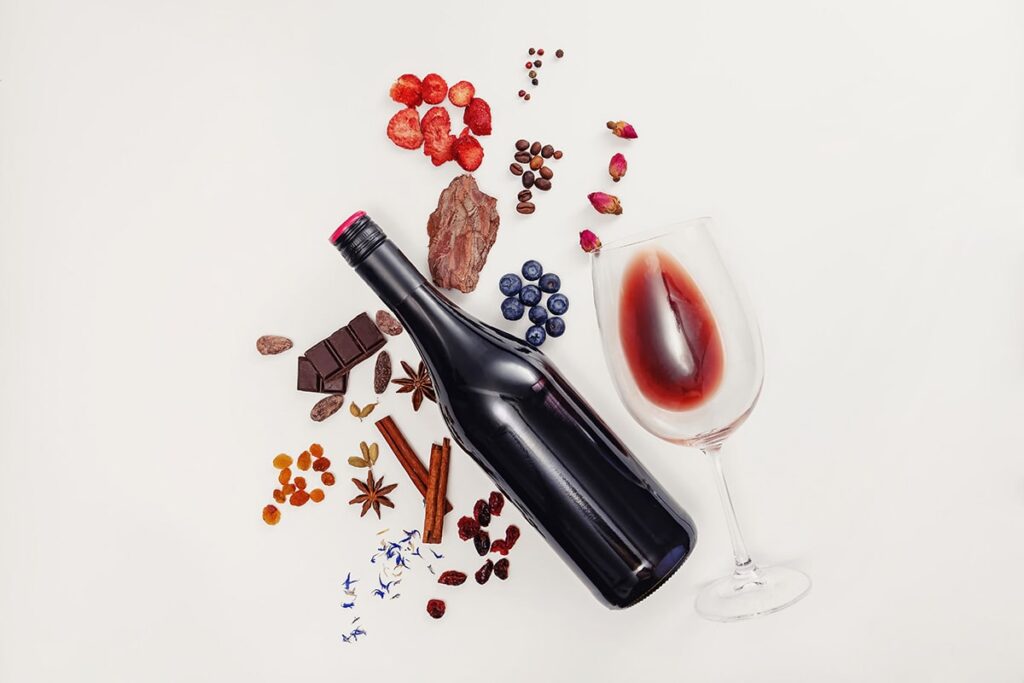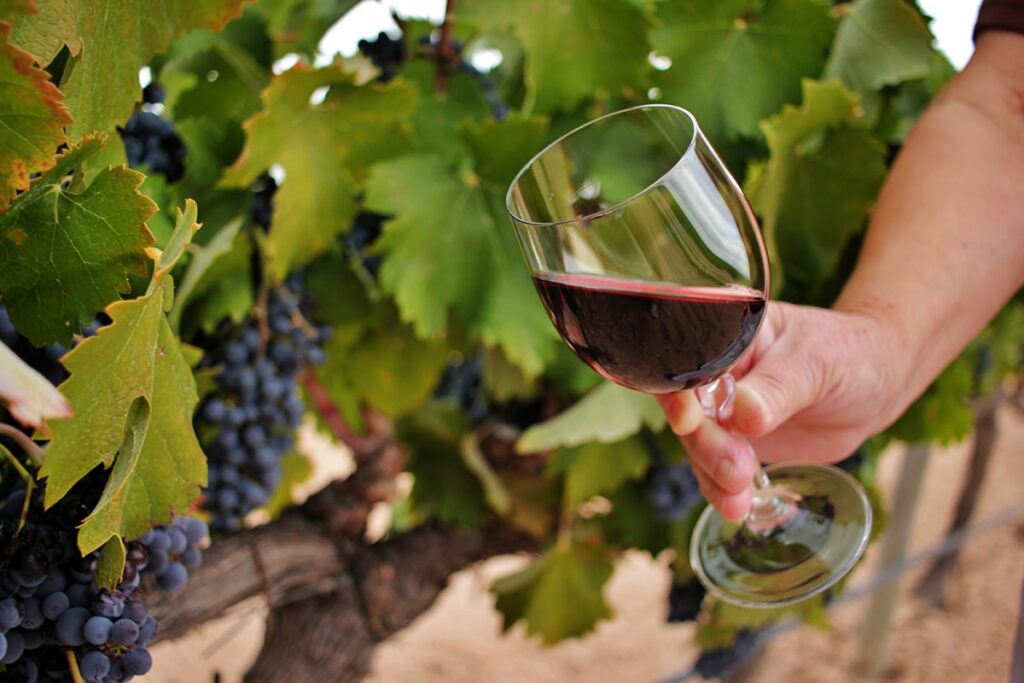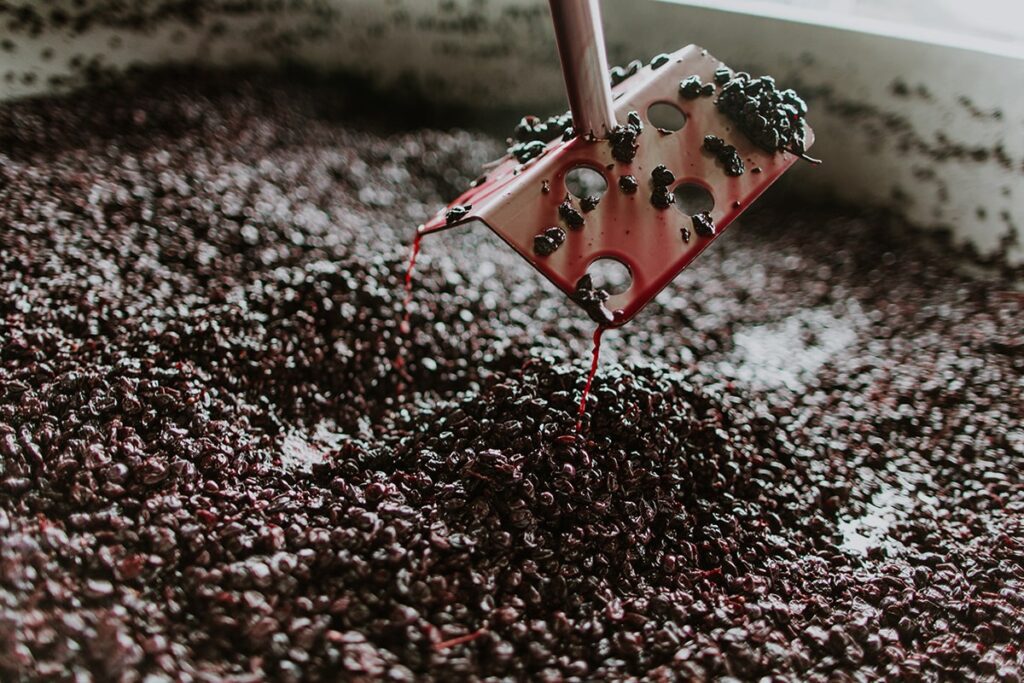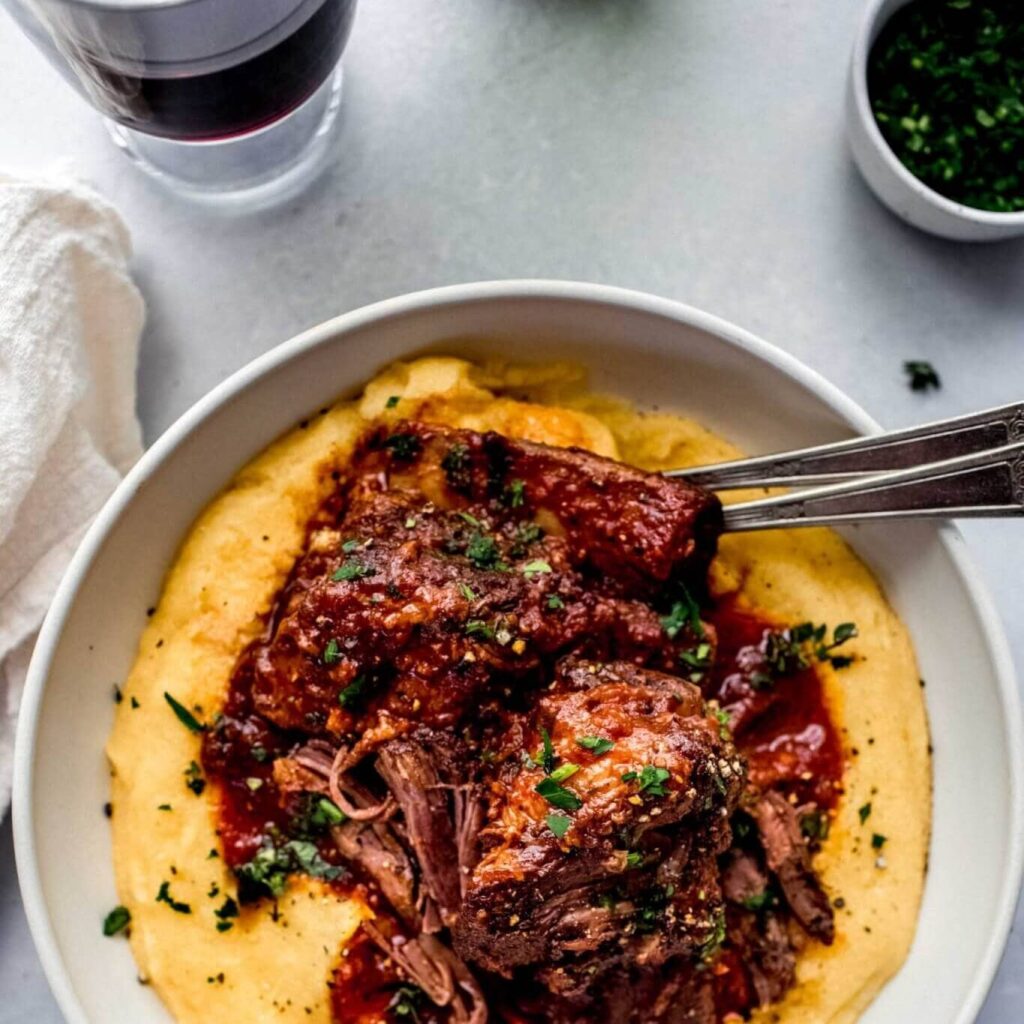Tannins in Wine: Taste, Mouthfeel, and Quality Explained

If you’ve ever bitten into an unripened fruit and immediately got hit with a dry and tingly sensation coating your mouth, that’s the astringent (slightly acidic or bitter) feeling of tannins at work.
However, you’ve also heard about tannins when describing wine. What do they do, and how do they influence the taste, mouthfeel, and overall quality of wine? Let’s take a closer look.
What Are Tannins?
Tannins are chemical substances that naturally occur in plants across the globe. They’re found in tree bark, wood, stems, leaves, seeds, buds, roots, legumes, and fruits.
You’ll find the significant presence of tannins in consumable foods and beverages, including dark chocolate, walnuts, cinnamon, pomegranates, açaí berries, tea, coffee, and of course, wine.
Chemically speaking, Tannins are classified as phenolic compounds or polyphenols. They’re macromolecules derived from phenolic acids and composed of complex hydrogen and oxygen bonds. These big molecules bind to minerals, proteins, starches, and proteins, creating insoluble substances resistant to decomposition.
What Do Tannins Do?

Within plant structures, tannins are used for protection.
For example, tannins in buds protect the inner leaves from being eaten, whereas tannins in bark protect trees from being infected by fungi or bacteria. Likewise, tannins in fruit prevent animals from eating them before they’re ripe.
How Do Tannins in Wine Taste?
If you bite into an unripened pear or drink black tea with no additives, you can get an idea of the natural taste of tannins. However, tannins in wine can have a very complex taste, especially if it has aged a few years.
Essentially, tannins add bitterness and astringency. These two qualities are evident when you’re drinking a young wine, making it feel harsh on your tongue and drying out your mouth. The taste can be shockingly, mouth-puckeringly astringent, or “green.”
The same tannins in an aged wine can give rise to a silky-smooth mouthfeel with new notes of flavor and aroma, such as vanilla, fruit, and spices. That being said, tastes vary. Some appreciate the taste of wines with pronounced tannin, while others prefer to stay away.
How Do Tannins Affect the Mouthfeel of Wine?

Tannins are also responsible for the structure and body of red wines. They interact with proteins in the mouth to create a sense of viscosity or mouthfeel. The astringent taste of tannins is caused by their tendency to bind with saliva proteins. This binding results in the precipitation of these proteins, which gives the wine a dry, puckering sensation on the tongue.
While some people enjoy the mouthfeel of tannic wines, others find it excessively harsh. In general, younger wines tend to be more tannic than older ones, as the tannins have had less time to soften and mellow with age.
Where do Tannins in Wine Come From?
Tannins in wine come from five main sources: grape seeds, skins, stems, oak, and additives (such as tannin powder).
The oak barrels used for aging wine can contribute tannins during the first few years of aging. They typically contribute to color stabilization and mouthfeel. A high amount of barrel tannins gives the wine a sensation of fine graininess rather than flavor.
Grape farmers and winemakers have to pay close attention to the tannins in wine. They can be influenced by the grape variety used, conditions in the vineyard (e.g., weather), vineyard management practices (e.g., soil preparation, pruning), variations between vintages, and winemaking practices.
Are There Wines Without Tannins?
Because wine grapes naturally contain tannins, all wines have tannins. However, the amount of tannin varies across types of wine and the winemaking process.
Red wines have the highest amount, fermented with skins, seeds, and stems. White wines, which typically have the skins mostly or completely removed, have significantly lower levels of tannins. Therefore, when white wines are aged, they depend on acid and sugar levels to develop flavor rather than tannins.
Rosé wine’s tannin content falls somewhere in the middle of red and white wine. Sparkling wines strive for minimal skin and oak contact, so they have the least tannin content among all types of wine.
If you have tannin sensitivity, it’s best to stick to unoaked white wines such as Sauvignon Blanc, Riesling, and Pinot Grigio.
What Wines Have the Most Tannins?

Even among red wines, tannin levels can vary due to the grapes’ natural tannins and the winemaking process. Here are examples of high tannin wines:
- Sagrantino — These grapes from central Italy are known for their extremely high polyphenol content.
- Tannat — Similar to Sagrantino, Tannat grapes from Uruguay also have some of the highest tannin content among all wines.
- Cabernet Sauvignon — This is the most widely planted grape in the world, favored for its high aging potential, bold flavors, and velvety tannins.
- Nebbiolo — Another grape from Italy with a high tannin content, with a bitterness contrasted by its delicate aroma.
- Petit Sirah — Nowadays, this grape is commonly found in California, although it was originally from France.
- Petit Verdot — While traditionally used as a minor blending grape in the Bordeaux blend, it has since been used on its own to create a bold, fruity-yet-floral wine with smooth tannins.
- Monastrell — Also known as Mourvèdre, this grape is popular in Spain and France for its bold, smoky tannins.
Pairing High Tannin Wine with Food

The intensity and astringency of high tannin wine make it a perfect partner for rich, fatty foods. For example, the dryness of tannin wine can cut beautifully through a fat-marbled steak, with the tannin molecules binding themselves to the proteins and other organic compounds of the meat and allowing you to appreciate the subtler flavors of both food and wine.












